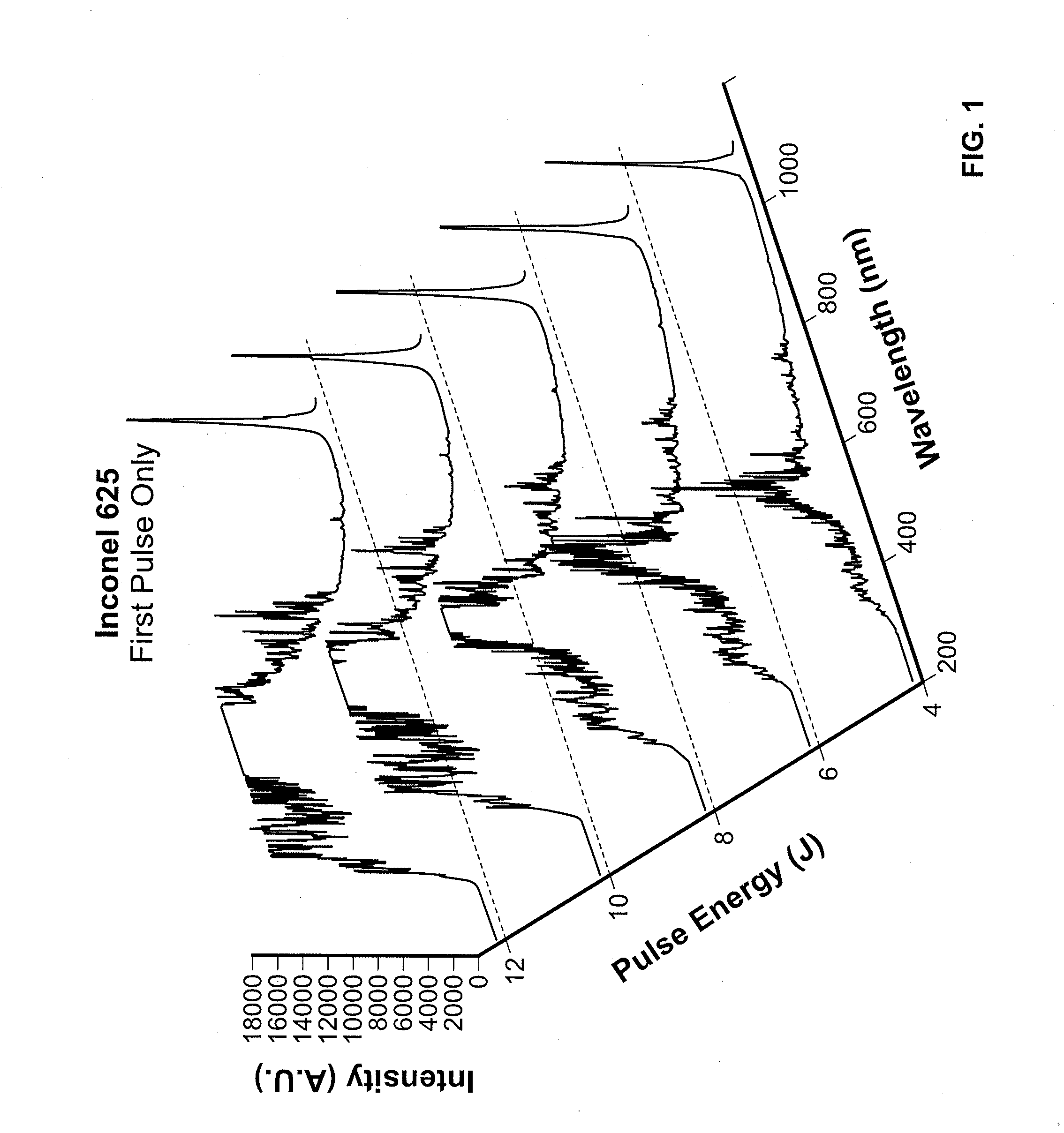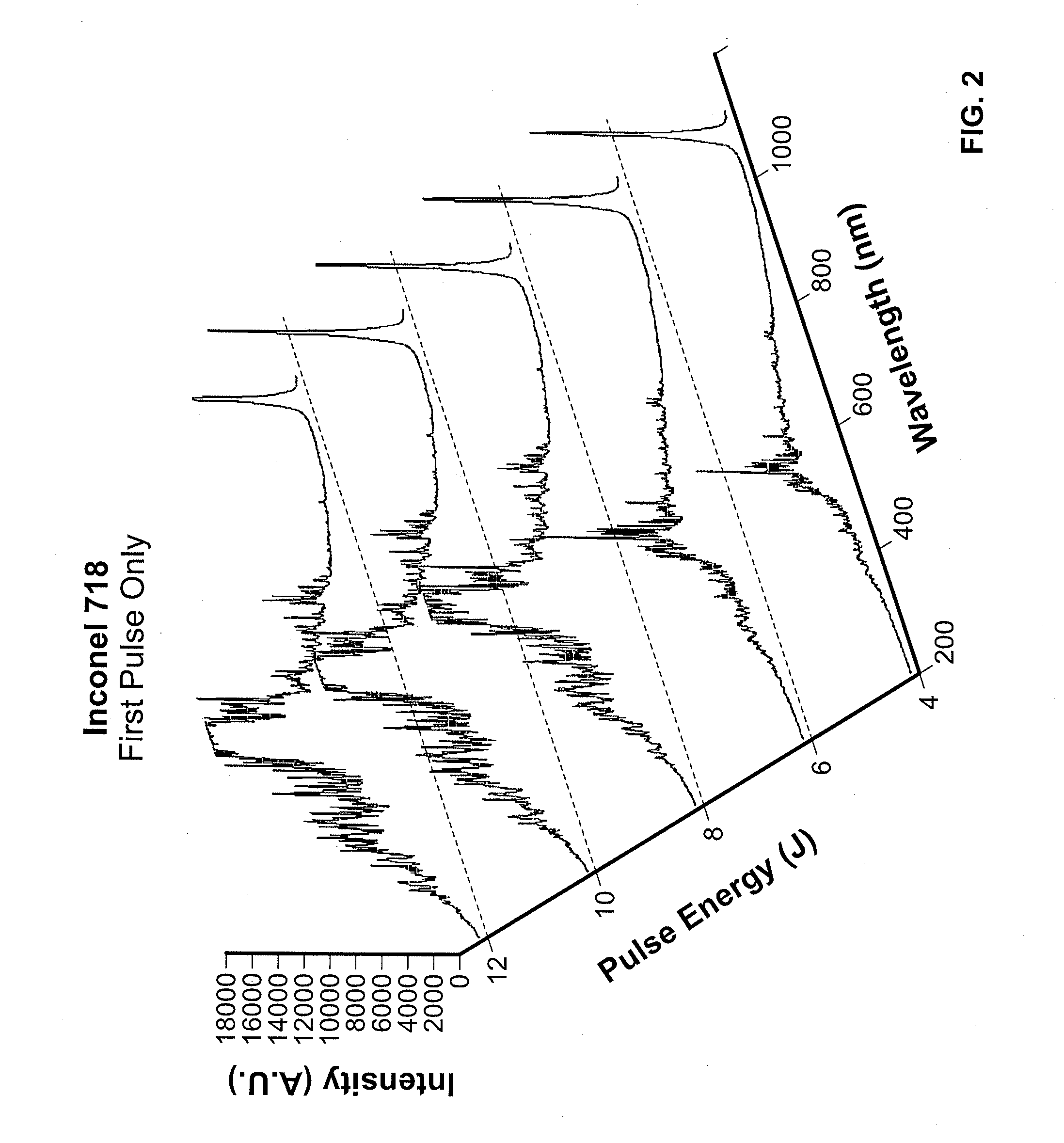Systems and Methods For Enhanced Control of Laser Drilling Processes
- Summary
- Abstract
- Description
- Claims
- Application Information
AI Technical Summary
Benefits of technology
Problems solved by technology
Method used
Image
Examples
Embodiment Construction
)
The present disclosure provides advantageous systems and methods for monitoring process parameters associated with laser drilling applications and using such process parameters to control, in whole or in part, laser processing operations. In particular, the disclosed systems and methods may be used to deliver process control capabilities / functionalities to laser drilling operations where cooling holes are being formed. In exemplary embodiments of the present disclosure, the disclosed systems and methods function to detect and / or identify if / when the laser drilling process is out of tolerance by detecting when the spectral emission signal associated with a specific constituent / element (or combination of constituents / elements) is not within a specific / predetermined range. In further exemplary embodiments, the disclosed systems and methods can detect and / or identify if / when a laser drilling process is out of tolerance by detecting when the ratio(s) of spectral emissions for one or mor...
PUM
| Property | Measurement | Unit |
|---|---|---|
| Length | aaaaa | aaaaa |
| Wavelength | aaaaa | aaaaa |
| Temperature | aaaaa | aaaaa |
Abstract
Description
Claims
Application Information
 Login to View More
Login to View More - R&D
- Intellectual Property
- Life Sciences
- Materials
- Tech Scout
- Unparalleled Data Quality
- Higher Quality Content
- 60% Fewer Hallucinations
Browse by: Latest US Patents, China's latest patents, Technical Efficacy Thesaurus, Application Domain, Technology Topic, Popular Technical Reports.
© 2025 PatSnap. All rights reserved.Legal|Privacy policy|Modern Slavery Act Transparency Statement|Sitemap|About US| Contact US: help@patsnap.com



